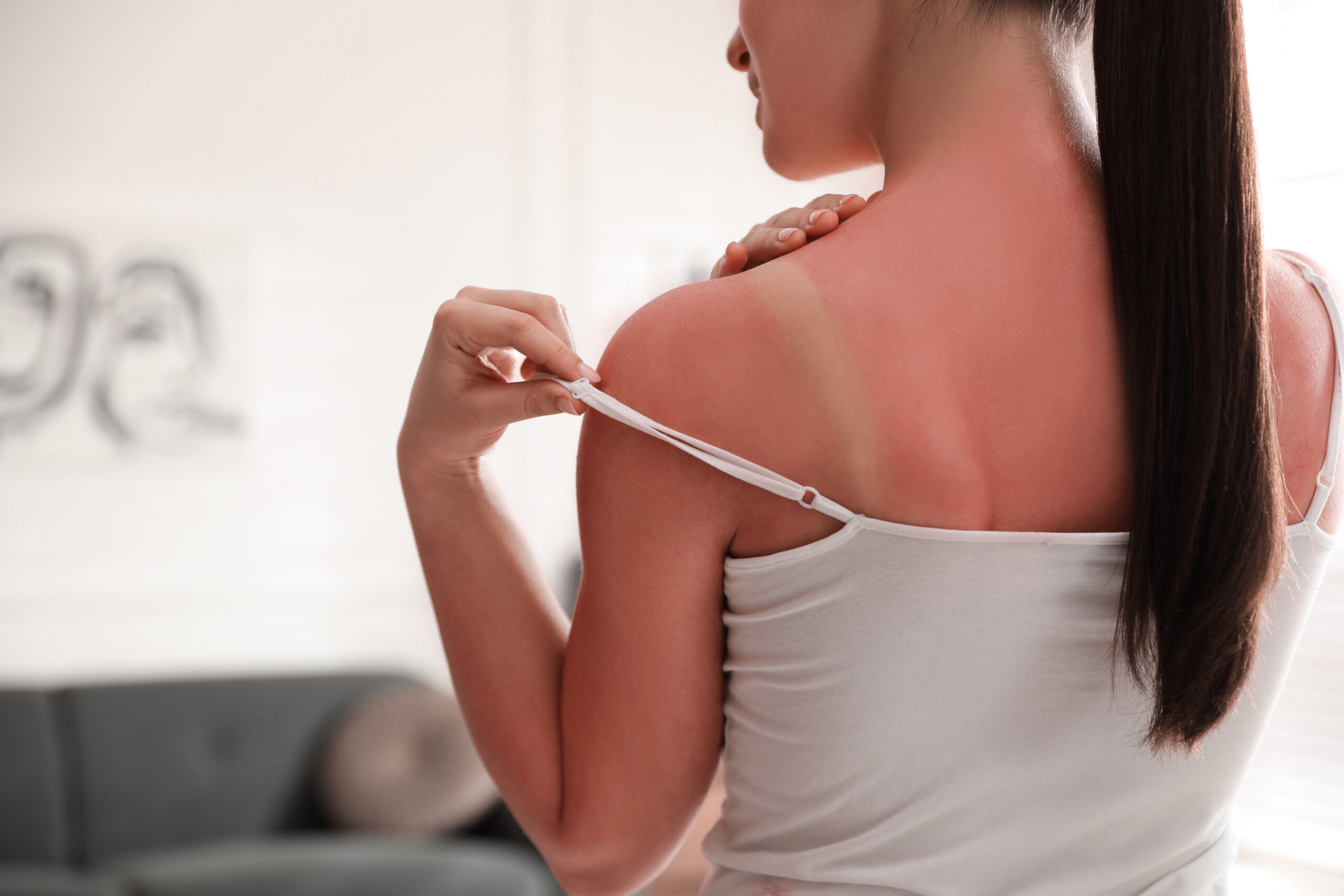Despite our best efforts to prevent them, sunburns happen. And although the initial burn fades, sunburns cause lasting damage that can have devastating outcomes in the long run. That’s why it’s essential to care for sunburns properly should one occur.
What Exactly is a Sunburn?
A sunburn is your skin’s response to overexposure to ultraviolet (UV) rays. To understand why and how skin burns, we need to understand melanin, the pigment that gives skin its color. When exposed to UV rays, our skin starts to produce melanin to protect itself; this is why we tan in the sun. However, this line of defense only goes so far.
If exposed to UV rays for an extended period, our skin can no longer defend itself, and we experience sunburn. Sunburns cause the skin to appear red and inflamed. Often, the burned area feels painful and hot to the touch.
Sunburns typically appear within a few hours of exposure to UV rays from the sun or artificial sources like tanning beds. Depending on the burn’s severity, it can take several days to fade.
While anyone can sunburn, certain groups are at increased risk, including people who:
- Have fair skin, light eyes, and red or blonde hair
- Live in or are visiting hot and sunny places with high UV indexes
- Regularly work outdoors
- Regularly tan using the sun or an artificial light source such as a tanning bed
- Take photosensitizing medications
People with darker skin tend to tan rather than burn in the sun, as their bodies produce more melanin. That said, both tans and burns are signs of cellular damage to the skin.
People with several moles on their bodies should take extra care not to burn in the sun. Although the presence of moles on the skin does not increase the chances of sunburn, frequent exposure to UV rays can cause moles to turn cancerous.
Are Sunburns Dangerous?
Sunburns are the leading cause of skin cancers, including basal cell carcinoma, squamous cell carcinoma, and melanoma, the deadliest type of skin cancer. Sunburns can damage the skin’s DNA, so your chance of developing skin cancer increases every time you burn.
Sunburns can cause precancerous skin lesions, also referred to as actinic keratoses and solar keratoses, which appear as rough, scaly patches on a sun-damaged area. Precancerous skin lesions are dangerous, as they can evolve into skin cancer.
Overexposure to sunlight can also cause eye damage, including damage to the retina, cornea, and lens of your eye, leading to cataracts.
In addition, sunburns are known to cause photoaging, the acceleration of the skin’s aging process. Signs of photoaging include:
- Premature fine lines and deep wrinkles
- Sagging skin
- Dark spots and discoloration
- Small red veins on the cheeks, nose, and ears
To prevent photoaging, wear a high SPF sunscreen on the face, neck, and hands daily. Make sure to wear sunscreen over the entire body when outdoors or in direct sunlight.
How Do I Care for a Sunburn?
A single sunburn can cause permanent skin damage, so it’s important to prevent them as much as possible. However, all is not lost if your skin does burn. You can mitigate the effects of sunburn and soothe your skin with the following methods:
- Take cool baths or showers. Avoid hot water, as it can further irritate the burn.
- Apply moisturizer to the sunburn. Sunburns dry out your skin. Applying a gentle moisturizer like aloe vera or hydrocortisone cream can help rehydrate your skin and soothe irritation.
- Take aspirin or ibuprofen. Over-the-counter painkillers can help reduce swelling and discomfort from sunburn.
- Drink plenty of water. Sunburns pull your body’s fluids to the skin’s surface, so it’s crucial to stay hydrated after a sunburn.
- Avoid exposing the area to sunlight while it heals. Try to wear soft, loose clothing that is tightly woven enough to keep the sun out.
If your sunburn is severe, you may need to seek medical attention. Signs of severe sunburn include:
- Blistering on a large portion of the body
- Blistering on the hands, face, and genitals
- Headaches, fever, nausea, and fatigue
- Severe swelling
- Pain or a gritty feeling in the eyes
- Signs of infection, including pus or blood
Seek emergency care if you experience any of the following symptoms after a sunburn:
- Fever above 103 degrees
- Dizziness
- Fainting
- Confusion
- Severe dehydration
Prevention is Key
Remember that the best way to keep your skin safe is to avoid sunburns altogether. If possible, avoid direct sunlight during the hottest part of the day, usually from 10 am to 4 pm, and always wear a high SPF sunscreen when outdoors for extended periods.

